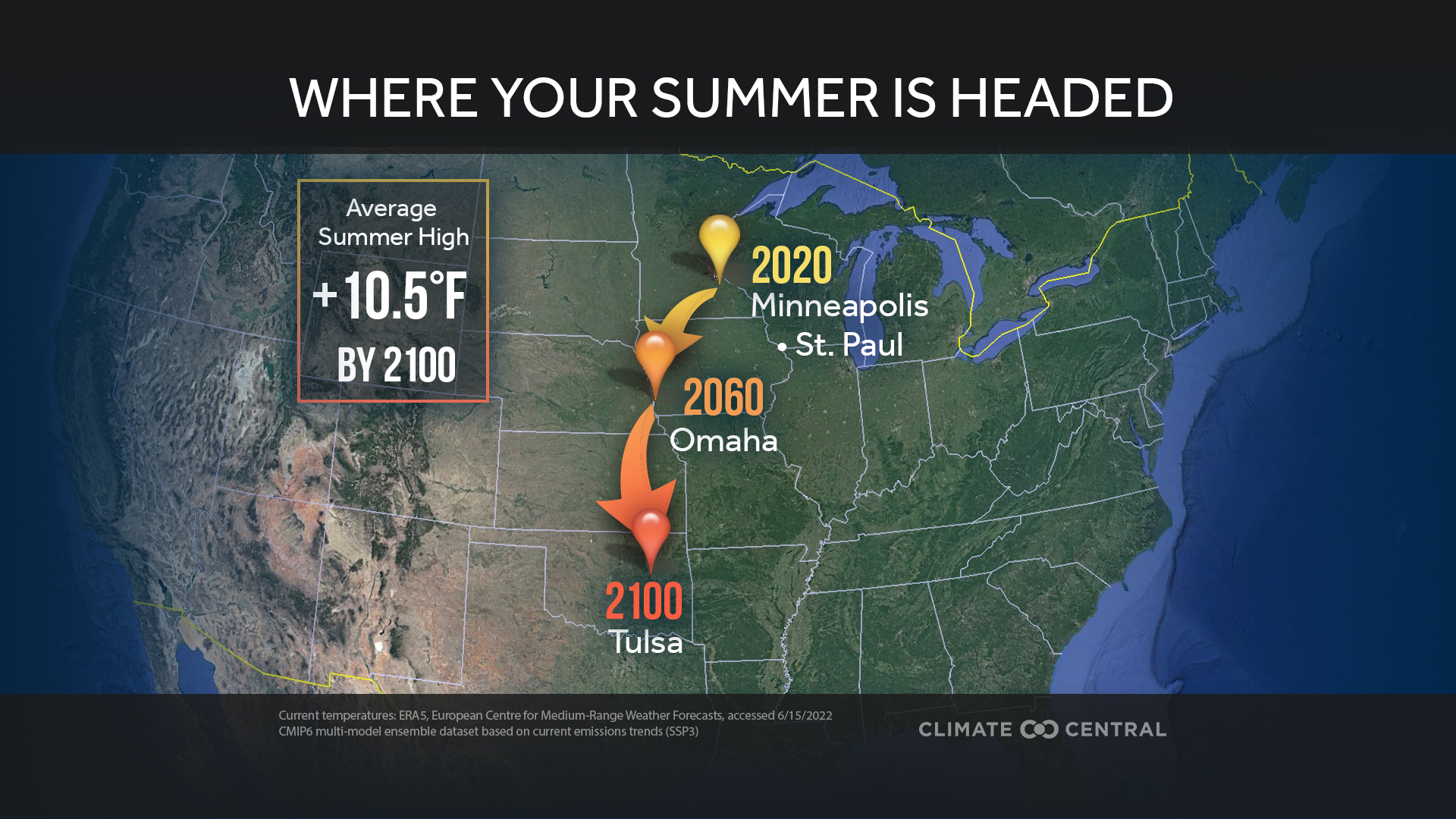Environment & Energy
Related: About this forumClimate Central: Shifting Cities
https://www.climatecentral.org/climate-matters/shifting-cities-2025KEY FACTS
- Summers have been heating up for decades and they’ll only get hotter if heat-trapping pollution continues — making future summers in Minneapolis feel more like current summers in Tulsa.
- With high levels of heat-trapping pollution, future summer high temperatures in 247 major U.S. cities would heat up by an average of 3.6°F by 2060 and 7.9°F by 2100.
- For many cities, summer temperatures in 2100 would be closer to current conditions in hotter locations hundreds of miles to the south.
- For 16 U.S. cities, there is no equivalent in North America to how hot they'd be in 2100. Their future summers are more similar to current conditions in Pakistan, the Middle East, and North Africa.

Where is your city headed? Click here to find out.
mountain grammy
(28,020 posts)Brenda
(1,708 posts)and I've heard over and over again for the last decade or so how unbelievably hot it will be for my area. And everyone should move to the Great Lakes Area to escape the heat.
Not true. At least in the short term.
The extreme heat records in the US (outside of southern Cal, Nevada, AZ) is straight up the gut from TX to North Dakota.
That's where the highest temps have been for the last 5-10 years. Even this summer. We have yet to pass 95 degrees yet I'm seeing 100's in Michigan, Minnesota, Montana.
I'm not saying the Southeast is not going to get cooked more each year, but folks should step back and not make such grand assumptions. They might end up hurting the people who don't expect off the charts heat.
OKIsItJustMe
(21,454 posts)(Or a city close by.)
OKIsItJustMe
(21,454 posts)This will give you a good indication of warming that has taken place in your area.
https://data.giss.nasa.gov/csci/stations_v4/
The “Common Sense Climate Index” was created by James Hansen, Makiko Sato, Jay Glascoe, and Reto Ruedy back in 1998. It’s basic concept is to measure how noticeable the current change is for you. You can read about it here:
https://www.giss.nasa.gov/pubs/docs/1998/1998_Hansen_ha01100t.pdf